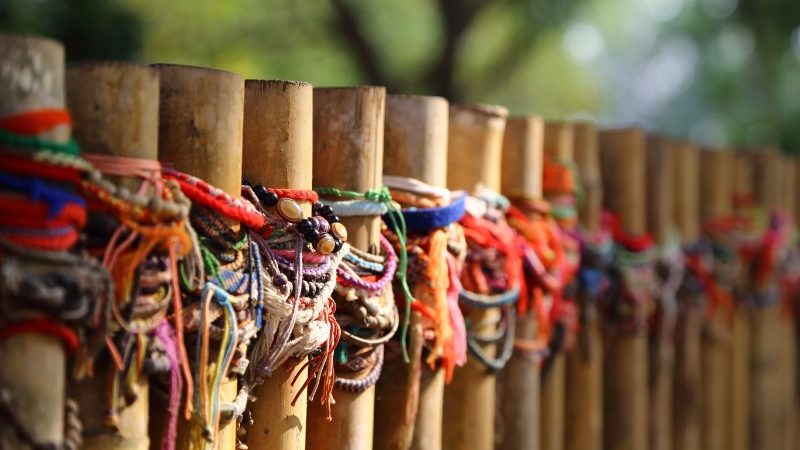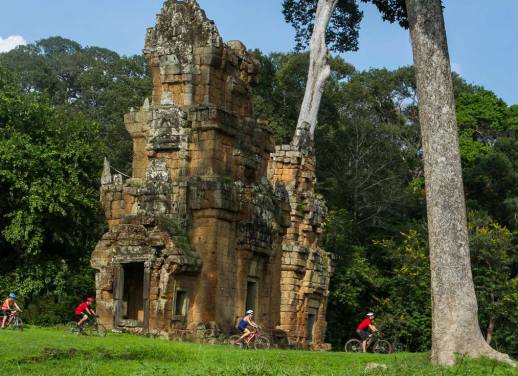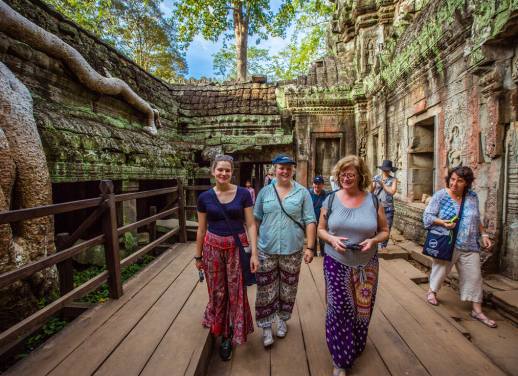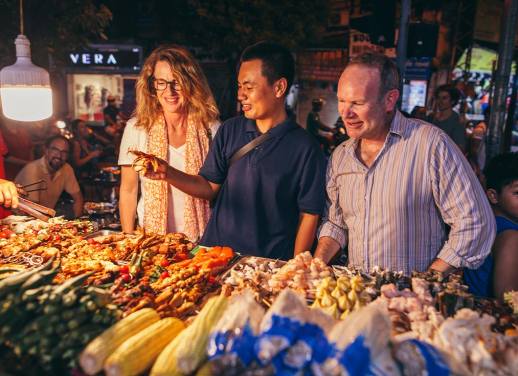Visit Phnom Penh today and, at first glance, the scars of genocide are far from visible. Cambodia’s capital is the country’s most populous city – busy, vibrant, cultured.
Yet just decades ago it was a ghost town. Those living in urban areas were forced to work in rice fields. Teachers, doctors, those knowing a foreign language, or even simply wearing glasses were exterminated. As Keasar Hong, Intrepid’s Senior Tour Leader in Cambodia put it, the country held host to “the most anti-intellectual movement of all time”.
Yes, it’s fair to say that Cambodia in the late 1970s was a very different place. And on the list of 20th century horrors, the Southeast Asian nation ranks high.
But let’s backtrack in the name of context. What happened? The Khmer Rouge took control of the Cambodian government in 1975, aiming to transform the country into a communist agrarian utopia. Until liberation four years later, anyone perceived as educated, wealthy or opposed to the government’s aims was tortured and killed. That, or subject to slave labor in rural camps – the remnants of which form Cambodia’s “Killing Fields”, sites visitable to this day.
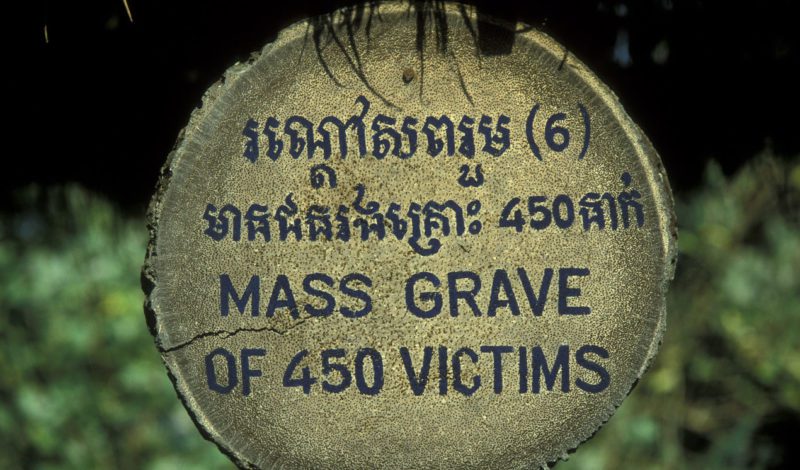
Killing Fields of Choeung Ek
All in all, over one million Cambodians lost their lives. For such a small country this equates to almost one in five dying as a result of the regime, whether from disease or starvation. And the impact is more devastating than visitors can comprehend. Even aside from the destruction of physical infrastructure and loss of human resources, the genocidal aftermath created a psychological legacy that has crippled the development of Cambodia.
FOR MORE LOCAL INSIGHT, CHECK OUT THIS INTERVIEW WITH A CAMBODIAN TOUR LEADER
The good news is that, as a traveler to Cambodia, you can help. Intrepid’s Cambodian tour leader Hong views visits to Tuol Sleng Prison Museum and Choeung Ek as an essential component of understanding Cambodia and its people. (The former is a former school that served as a Khmer Rouge base, the largest center of detention and torture in the country; the latter a memorial to the torture victims, the site of the Killing Fields, and home to a structure of over 8,000 human skulls.)
Visiting either, or both, is vital to getting to grips with the nation’s history and current state of development.
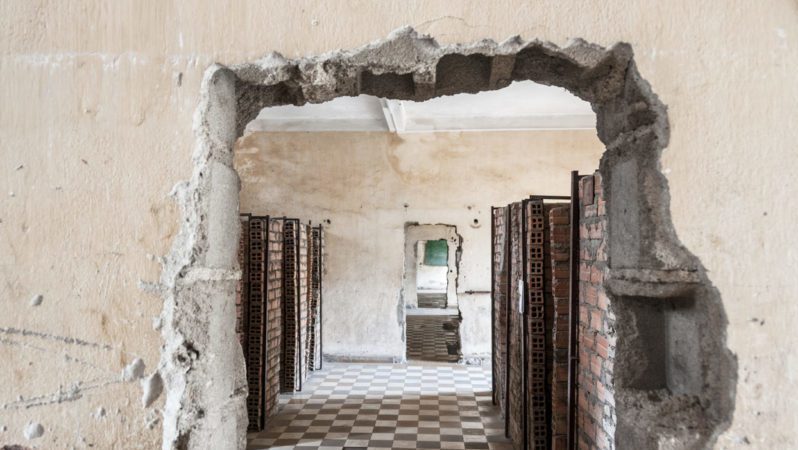
Tuol Sleng Prison Museum
And since virtually every family in Cambodia has been affected by the genocide and its aftermath, visiting the sites respectfully is as important as you’d expect. Hong advises dressing modestly (wearing shirts that cover shoulders, and pants or skirts that cover knees) and being quiet and somber, out of awareness of the surroundings. Clearly, prancing around skulls and posing for photos doesn’t show an understanding of the gravity of the site. Neither does ignoring signs that quite bluntly say “please don’t walk through the mass grave”.
But visiting the Killing Fields just to understand Cambodia’s past is only part of the story. Visiting them is also important in highlighting how multidimensional the country is. Because when you usually hear ‘Cambodia’, what do you think of? Angkor Wat, in all likelihood.
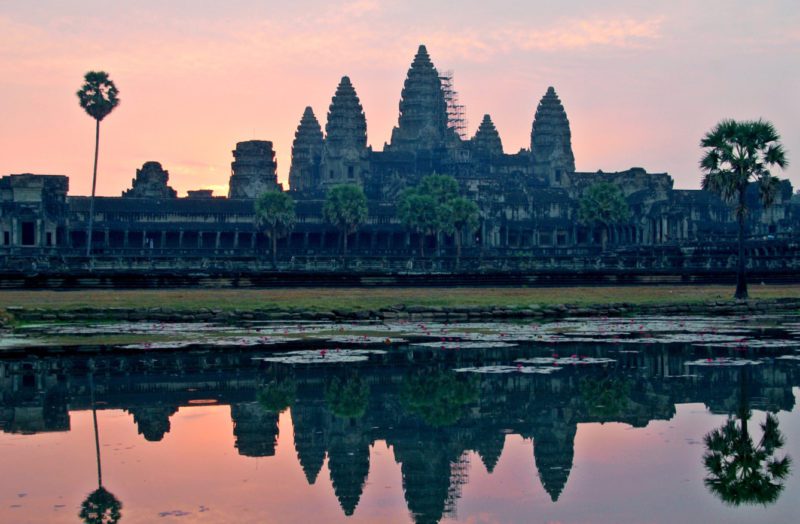 And yes, Siem Reap’s temple complex is iconic for good reason – fascinating historically, and obviously worth a visit for that classic sunrise shot. But the genocide memorials provide a compelling (though undeniably harrowing) reason to visit other parts of the country. Go to Phnom Penh for the history and memorials, but also for the National Museum, Central Market, Royal Palace, and hilltop temple, Wat Phnom. But then venture further afield – to the endless beaches of Sihanoukville, the old town of Kampot, the pretty, riverside city of Battambang.
And yes, Siem Reap’s temple complex is iconic for good reason – fascinating historically, and obviously worth a visit for that classic sunrise shot. But the genocide memorials provide a compelling (though undeniably harrowing) reason to visit other parts of the country. Go to Phnom Penh for the history and memorials, but also for the National Museum, Central Market, Royal Palace, and hilltop temple, Wat Phnom. But then venture further afield – to the endless beaches of Sihanoukville, the old town of Kampot, the pretty, riverside city of Battambang.
SUBSCRIBE TO OUR NEWSLETTER FOR TRAVEL INSPO, GIVEAWAYS & MORE
But if you can’t get genocide out of your mind, you’re probably wondering how you can help the country recover from its tragic past and develop its much-needed tourism industry. In addition to respecting the country’s culture, religion and traditions, it’s all about buying local. Hong encourages visitors to eat local, shop local and do anything they can to support the incomes of Cambodian families.
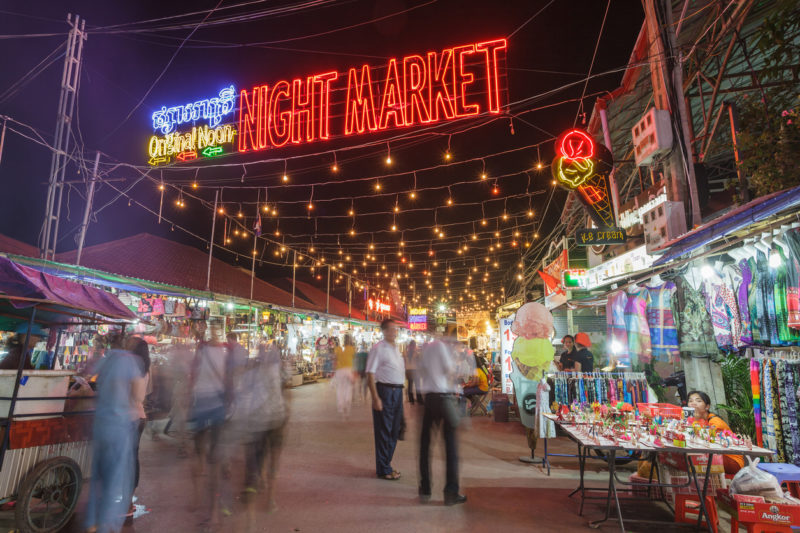
Night market in Siem Reap
There are admirable projects throughout the country that help with this, and of these, three stand out. In Sihanoukville you can visit The Starfish Project – a cafe run by the Intrepid Foundation, offering delicious baked goods and, more importantly, support for locals with disabilities. In Siem Reap you can enjoy Phare – an incredibly lively, nightly circus that helps disadvantaged Cambodian youths. And in Kampot you can experience a traditional massage by a blind masseur or masseuse, thanks to a center that allows blind Cambodians to support themselves with dignity.
All worthy causes and worthy projects, but it must be remembered that many of them are necessary, in part, because of the genocide and its aftermath. And, as has become clear, the only way to really understand its horrors and these impacts is by visiting the Killing Fields. Respectfully, of course.
Inspired to visit Cambodia yet? Intrepid’s 14-day Best of Cambodia tour covers the harrowing history, aforementioned social enterprises, and all the awe-inspiring beauty and culture you could want.
Image credits (top to bottom): Shutterstock, iStock (x2), Intrepid Travel (x2)

